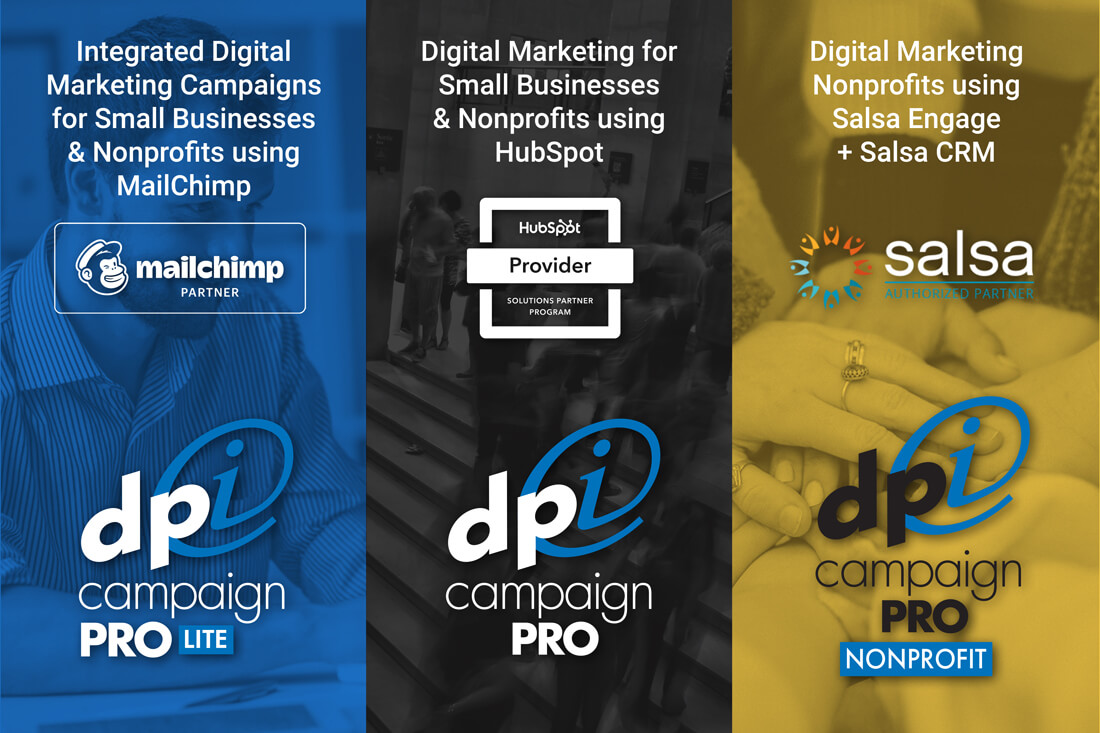When Is It Time To Conduct A Content Audit?
Your social post engagement is down. Your blog post views and clicks are tanking. Page views across your website and conversions are at an all time low. These are just a few of the signs that it may be time to do a content audit. But, these aren’t the only reasons to revisit your content strategy and examine the content you’re sharing with your target audience.
What exactly is a content audit?
A content audit is a complete inventory of all of the assets and resources on a website, social networks, site wide SEO and other digital content that is analyzed and determined whether to edit, create, update or delete based on its effectiveness and relevance to your content strategy.
Usually a content audit involves a look into social media strategy as well as landing pages and conversion goals. It typically includes a deep dive into the goals of the content marketing strategy to see if they are still SMART goals – specific, measurable, achievable, relevant and time-bound.
When people hear the word “audit”, immediately the response is negative – financial audits are usually a hunt to find issues with money being spent inappropriately or to ensure that everything is being done above boards. But, a content audit doesn’t have to be a witch hunt. In fact, content audits are usually eye opening and helpful in determining where more can be done to improve. And who doesn’t want to improve?
How to go about conducting a content audit
Conducting a content audit begins by examining the goals established for the content strategy – assuming there are SMART goals already in place. If there isn’t, now is a good time to start setting some. You should have some conversion-based goals set for your content strategy to help flesh out the promotion of your content, like “this quarter, we want to increase the sales of widgets by 50% by posting no less than two case studies a month and one blog post per week highlighting benefits of our buying widgets”. You can see that the goal is time-bound, measurable, achievable, relevant and specific.
Everything starts with goals. The key to every strategy is having a goal – as Franklin Covey said, “Begin with the end in mind.” You have to know what you want to achieve or you won’t know when you’ve achieved it.
Sometimes goals you’ve previously set are no longer relevant or they need to be updated to fit your business or organization’s current status. This is ok! It’s understandable if you’ve outgrown your own goals – or maybe your goals are too lofty and you need to make them more achievable. Whatever you do, make sure the goals for your content audit are where you want to be going forward, not where you’ve been.
Once you’ve got your SMART goals set for your audit, it’s time to find the right tools for the job. There are a bunch of content audit tools out there. To be honest, a good old-fashioned spreadsheet is a great place to start. There are several templates out there, largely for SEO, however, for a full content audit, you’re not just looking at SEO. You’re looking for copywriting effectiveness, matching the content to the goals, reviewing channels and engagement – not just how you’re ranking in the search engines.
I recommend either starting with an Excel spreadsheet or going to Google Sheets to get started on your audit. If you’re working with a team, Google Sheets is probably the way to go. It gives everyone access, wherever they are. If you’re primarily working by yourself, an Excel spreadsheet will suffice.
It may help to divide the document using a different sheet for each category of content. That is, a sheet for your website and its SEO, a sheet for social media channels and content analysis, a sheet for email marketing, one for PPC and advertising, one for all other assets, etc. Keeping them separate may help make the job easier, especially if you focus on one area of the content audit at a time.
Start with your website
The best place to start is with the content you own – your website. You should list out all the pages of your website, as well as posts, if you have a blog on your website. Assuming you’ve had Google Analytics (or some type of analytics tracking traffic) setup, you’ll want to setup columns for bounce rate, page views, average time on page and exit rate. You can certainly add more, and if you have page value and e-commerce metrics setup, you’ll want that data too.
For the purposes of a content audit, however, the bounce rate, page views, average time on page and exit rate will tell you a lot about how users responded to the content on a give page. You’re looking for which pages and posts have a high bounce rate, have a low average time on page or high exit rate all with high page views. This will tell you that although the traffic to these pages is high, the dropoff either by bouncing or exiting is also high. These pages should be looked at for content and determine what can be changed to increase effectiveness.
Additionally, you’ll want to take a look at Google Search Console for your website and record all queries that resulted in a click from Google to your website.
Each page in the document should have their page title, h1 (main headline), SEO keyword(s) and meta description to check the relevance of the page to the queries and analytics to see if there’s a disconnect between what the user sees and what is meant by the overall purpose of the page.
This should take a considerable amount of time, depending on the size of your website, the analytics and reporting you have setup and the time it takes to review it all. That’s ok. This is an important part of the content audit and an audit that isn’t based on real data, well, it’s not an audit at all.
Add in your social media content audit
Next, you’ll want to focus on likely your next largest inventory of content – your social media channels. A social media content audit might take some time, however, if you’re using a service like Hootesuite or Buffer, it might be slightly faster and easier. You’ll want to take inventory of all the social media channels your business or nonprofit has a presence on – Facebook, Twitter, Instagram, LinkedIn, Snapchat, you name it.
You shouldn’t really be on EVERY social media channel there is, though. Why? Well, I doubt very highly that your target audience is active on every social media channel. In fact, if you’re a B2B, you’re probably only really on a handful of social media networks. Regardless, since we’re recording it all, record ALL of the social media channels you have a presence on. Then, let’s focus on content.
If you’re using Hootesuite, let’s say, it’ll be pretty easy to get your content and analytics (with a paid account). If you don’t have a paid account, it’ll be a bit more tedious and laborious to get to each platform and record the analytics for your content. The primary metrics you’re concerned with are engagement (particularly clicks), impressions, number of posts and post reach. These metrics will help you determine which posts had greater reach, resonated better with your audience and converted better.
It’s important to audit ALL of your channels – even the ones you don’t participate in but have a presence on. Doing this helps determine if being on a certain channel is even something you should worry about or if the account should be closed and forgotten. Your business shouldn’t be on a social media channel just because it exists. Only choose to be on networks where your audience actively participates and that makes sense for your business.
Email marketing and automation
Next, you’ll want to look at your email marketing and marketing automation, if you’ve set it up. Most email platforms, like MailChimp or Constant Contact, have an export feature built in to download your campaigns and their results. The metrics that you’re interested here are pretty obvious – open rate and click-through-rate, but you should also take note of bounces and unsubscribes too because those are signs that your content is no longer valuable to your audience and adjustments need to be made.
A good timeframe to measure with each of these is 6 months to a year, to get a full picture of how your content is performing. Much the same that business ebbs and flows throughout a given year based on seasons, holidays and other external factors, your content marketing metrics will also fluctuate. That’s why it’s important to have enough of a content audit timeframe as possible to make sure the data you’re seeing isn’t just a seasonal anomaly.
PPC and digital advertising
Including your digital advertising – SEM, PPC and social media advertising – is another important part of your content audit that some people overlook because they don’t necessarily consider it “content”. It is – simply put – your content is anything you put out, whether online or using traditional methods, that is of value to an audience.
Your pay-per-click advertising and other campaigns will have similar metrics – impressions, reach, click-throughs as social media and email marketing and automation that you’ll want to record as part of your content audit. You’ll also want to record any URLs that the campaigns link to. You’ll want to determine that the URL matches the content of your advertisement, and that the information on the linked page is relevant to what was clicked on.
You’ll also want to determine your ROI – whether your advertising is generating more leads or if it’s simply an expense. If it’s just an expense, you’ll want to dig deeper into why that is – is it because of the content of the ad? Is it that your audience doesn’t respond to ads the same way as other audiences do? Do you have SMART goals setup for your ads and are they working? Dig right in and ask the hard questions and don’t be afraid to answer them. The answers may surprise you.
If it may seem as though I’m throwing cold water on the effectiveness of PPC advertising – I am. While PPC advertising has its place, it’s ROI and often the type of customer that is generated from PPC advertising generally isn’t typically going to be a long-term, loyal customer. Instead, they are most likely looking to find a solution to their problem and are choosing your business because it’s in front of them at that moment or your costs appear to be the best deal.
Content marketing, often called inbound marketing, helps build a relationship with leads and potential customers before they decide to buy through the publication of engaging content to attract, engage and delight your followers, rather than running a bunch of ads in the hope that they might click on one to learn more.
All your other assets
Reviewing any other assets that you’ve not already audited is the last step in the content audit. It could include printed collateral, as well as signage, and anything offline that you’re doing. After all, it’s still content and if it’s working for you to bring in new customers, it’s part of your marketing mix.
Take a hard look and really think about what offline assets you have – is that message sign out by the road causing people to stop or remember you because of the funny messages you put up? Do you have window signage that causes people to stop in because of a sale or a promotion? Do you have a rack card at a rest stop or tourist center that provides information to visitors as they try to learn more about the area? These are all good examples of offline content that help your marketing efforts (and that you may not think about).
Record what the assets are, how often they’re updated and where they are placed. If you know something is working, put in a note about it (IE Over the past year, 20 people have brought in a rack card that they saw at a visitor center).
Other digital assets could include podcasts, multimedia and videos and online courses. It’s important to really consider everything in a content audit.
Analyzing your content
Finally, once you’ve audited all of your content, you’ll want to determine, whether through a numeric ranking system or just using a scale of 1-10, working or not working, and rank each area, each item. This process is where you really consider and learn just how well what you’ve been doing is working – or not working. Be honest and try to be objective. If something isn’t working, mark it as such.
Once you’ve gone through it all and analyzed your content, you will need to make a plan – abandon content that has been underperforming and/or not working or make a plan to adjust it to work better. There’s really no right or wrong answer here – you need to determine the amount of work needed to make adjustments and whether they are worth the time and effort for your business or organization.
In general, focusing on areas that are working well is probably going to be more effective than trying to adjust underperforming content to a point where it is working, much like the fact that it is easier to keep an existing customer than attract a new one.
Content audits are essential
Content audits are essential and should be conducted annually, if not bi-annually. Conducting a bi-annual content marketing audit can be beneficial in that you waste less time on content that isn’t working by making changes inside the same year rather than spending the entire year trying to make something work that just won’t.
When you conduct a content audit and really consider all of the content within your organization, you reveal areas for improvement but also what you’re doing that’s working (and what you should consider spending more time on). Content audits are time consuming, when done right, but are worth the effort.
Do you need help with a content marketing audit? Reach out to DPi Graphics today!
SIGNUP FOR OUR EMAIL NEWSLETTER!










